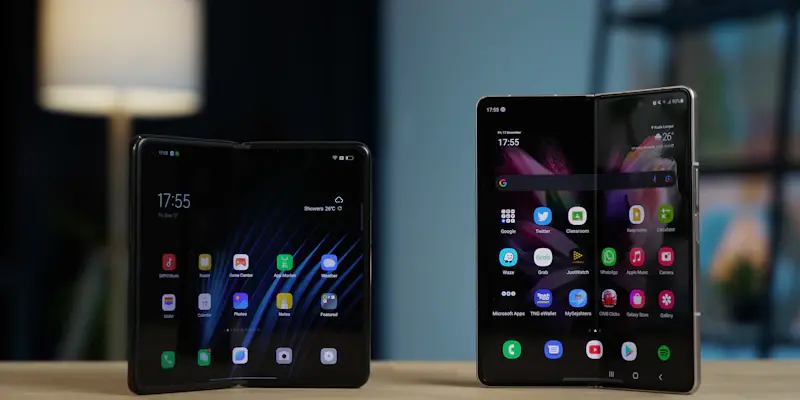The technology sector is abuzz with the news of Apple’s anticipated entry into the foldable smartphone market, a development set to unfold in 2026. One can’t help but wonder if Apple’s venture into foldable devices will redefine the premium smartphone market. As consumers’ clamor for more advanced and flexible devices grows louder, Apple’s strategy to launch a foldable iPhone aims at addressing these demands while cementing its presence in the burgeoning foldable market. Although Samsung and Huawei have already made significant strides through their respective foldable phone offerings, Apple’s foray is positioned to shake up the competition, owing to the brand’s unique approach to innovation and premium pricing strategy.
The foldable iPhone, expected to be introduced by the end of 2026 or early 2027, is rumored to feature top-of-the-line build quality and an exquisite design that seamlessly integrates form and function. Apple’s decision to enter this segment speaks volumes about the company’s commitment to staying at the forefront of technological advancements and catering to the evolving preferences of its user base. Additionally, the move comes at a time when the foldable phone niche is experiencing a surge in consumer interest, making it a strategic endeavor that could significantly shift market dynamics. With an anticipated price tag exceeding $2000, consistent with Apple’s luxury brand ethos, the device will undoubtedly target discerning consumers who value premium craftsmanship and cutting-edge technology.
Strategic Implications for Apple’s Market Position
Apple’s foray into the foldable smartphone domain is more than just a new product launch; it represents a carefully calculated move to solidify its market position and challenge existing leaders. The company’s ability to innovate while maintaining its brand’s premium appeal is likely to set its foldable iPhone apart, attracting a segment of the market that is willing to invest in superior technology. Notably, the foldable iPhone entering the New Product Introduction (NPI) phase at Foxconn underscores Apple’s meticulous approach to product development, ensuring a seamless transition from concept to market-ready device.
Analyst Jeff Pu’s insights on Apple’s timeline, with mass production scheduled for the second half of 2026, suggest that Apple is leaving no stone unturned in its preparation. By aligning production and market release strategies, Apple aims to capture the interest of tech enthusiasts and early adopters. However, the premium pricing strategy presents a unique challenge, as it could potentially influence consumer adoption rates. Existing foldable models, while innovative, have faced criticism over durability and practicality, aspects that Apple will likely address with its focus on high-quality materials and build.
Despite these strategic moves, Apple faces hurdles, particularly with delays in AI feature implementation, which have impacted functionalities like Siri. These delays have contributed to fluctuating investor confidence and stock performance. Nevertheless, Apple’s historical resilience and continued investment in AI technologies reflect a commitment to overcoming these challenges.== The envisioned foldable iPhone, with advanced multitasking capabilities and AI-driven functionalities, exemplifies Apple’s dedication to innovation, potentially revolutionizing user interactions and experiences.==
Design and Technical Specifications
When discussing the foldable iPhone’s anticipated design and specifications, it’s clear that Apple’s intention is to set a new standard in the foldable device market. Rumors suggest a sophisticated book-style design, featuring a 7.8-inch internal display free from creases and a convenient 5.5-inch exterior display. This design aims to balance practicality with elegance, offering users an immersive viewing experience while maintaining portability. The foldable iPhone is expected to exhibit a slim profile, measuring between 9 and 9.5 mm in thickness when folded and 4.5 to 4.8 mm when unfolded, ensuring a sleek yet sturdy build.
In terms of usability, the foldable iPhone might integrate a Touch ID side button, a departure from the prevalent Face ID feature, signaling a blend of new and familiar technologies. This design choice indicates Apple’s adaptability and willingness to innovate while respecting user preferences. Enhanced multitasking capabilities, supported by the larger displays, will cater to power users who demand efficient workflow management and superior performance. Additionally, leveraging AI-driven functionalities will enhance the user experience, making tasks more intuitive and interactive. By focusing on these aspects, Apple’s foldable iPhone could set new benchmarks in both design and functionality, challenging competitors to elevate their offerings.
Moreover, the anticipated use of high-quality materials in constructing the foldable iPhone aligns with Apple’s reputation for unmatched build quality. Combining durability with a refined aesthetic ensures that the device not only looks good but withstands daily wear and tear. This meticulous attention to detail highlights Apple’s approach to creating a product that meets the high expectations associated with its brand. As the foldable iPhone moves closer to its anticipated market release, its potential impact on the premium smartphone segment becomes increasingly evident. By pushing technological boundaries and redefining user experiences, Apple’s entry into the foldable market promises to be a pivotal moment in the tech industry.
Future Implications and Market Impact
The tech world is buzzing with the news that Apple plans to enter the foldable smartphone market in 2026. This move raises questions about whether Apple will redefine the premium smartphone sector. With increasing consumer demand for advanced and versatile devices, Apple’s strategy with a foldable iPhone aims to meet these demands while solidifying its position in the growing foldable market. Despite Samsung and Huawei having significant success with their foldable phones, Apple’s entry is expected to shake up the competition due to its innovative approach and premium pricing.
The foldable iPhone, expected to debut by late 2026 or early 2027, is rumored to boast high-end build quality and an exquisite design that seamlessly blends form and function. Apple’s foray into this segment reflects its commitment to staying at the cutting edge of technology and evolving user preferences. This move coincides with increasing consumer interest in foldable phones, making Apple’s entry a potentially game-changing event. With a price tag likely exceeding $2000, in line with Apple’s luxury brand image, this device will cater to discerning consumers who prioritize premium craftsmanship and the latest technology.

